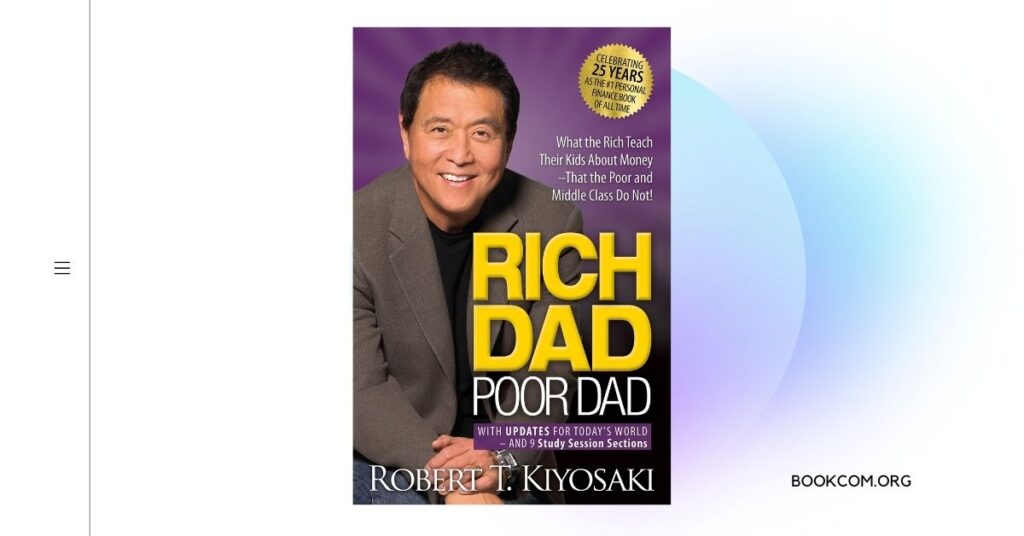In the quest for financial independence, one of the most crucial aspects is generating passive income. ‘Rich Dad, Poor Dad’ by Robert Kiyosaki offers invaluable insights into building assets that generate passive income and create a pathway to financial freedom. By understanding the lessons from this influential book, you can transform your financial outlook and take steps towards building a sustainable income stream. In this article, we will explore the key insights from ‘Rich Dad, Poor Dad’ that can guide you in building assets for passive income.
Lesson 1: Shifting Focus from Earned Income to Passive Income
One of the fundamental principles in ‘Rich Dad, Poor Dad’ is shifting our focus from solely relying on earned income to actively seeking sources of passive income. Kiyosaki emphasizes the importance of building assets that generate cash flow independently of our time and effort. By creating a portfolio of income-generating assets, we can break free from the cycle of trading time for money.
Practical Tip: Begin by assessing your financial goals and identifying potential income-generating assets. Consider investment opportunities such as real estate properties, dividend-paying stocks, index funds, peer-to-peer lending, or creating digital products. Diversify your portfolio to mitigate risks and maximize potential returns.
Lesson 2: The Power of Real Estate Investments
In ‘Rich Dad, Poor Dad,’ real estate investments are highlighted as a powerful avenue for generating passive income. Kiyosaki emphasizes the long-term potential of real estate, as it offers opportunities for cash flow through rental income and potential appreciation in property value. By investing strategically in real estate, you can build a sustainable source of passive income.
Practical Tip: Educate yourself about real estate investing by reading books, attending seminars, or seeking guidance from experienced investors. Start small by considering rental properties or real estate investment trusts (REITs). Conduct thorough market research and analysis to identify properties with favorable rental demand and growth potential.
Lesson 3: The Role of Stocks and Dividend Investing
Another key lesson from ‘Rich Dad, Poor Dad’ is the importance of investing in stocks, particularly those that provide consistent dividends. Dividend-paying stocks offer a reliable source of passive income, as they distribute a portion of the company’s profits to shareholders. By investing in dividend stocks, you can build a portfolio that generates regular cash flow.
Practical Tip: Research and identify stable companies with a history of consistent dividend payments. Look for stocks in industries that align with your investment strategy and risk tolerance. Regularly review your portfolio to ensure a balanced mix of dividend-paying stocks from different sectors.
Lesson 4: Creating Digital Products and Online Businesses
In the digital age, ‘Rich Dad, Poor Dad’ acknowledges the tremendous potential for passive income through creating digital products and online businesses. The book emphasizes the scalability and low overhead costs associated with online ventures. By leveraging the power of the internet, you can reach a global audience and generate income while you sleep.
Practical Tip: Identify your skills, passions, or areas of expertise that can be translated into digital products such as e-books, online courses, software, or membership sites. Alternatively, explore online business opportunities such as affiliate marketing, e-commerce, or blogging. Invest time in building a strong online presence and developing a marketing strategy to maximize your passive income potential.
Lesson 5: Continual Learning and Adaptation
‘Rich Dad, Poor Dad’ emphasizes the importance of continual learning and adapting to changing market dynamics. Building assets for passive income requires staying informed about investment trends, market conditions, and evolving opportunities. Remaining open to new ideas and adjusting your strategies as needed is crucial for long-term success.
Practical Tip: Commit to ongoing education in the areas of investing, personal finance, and entrepreneurship. Stay updated with financial news, read books, follow reputable blogs or podcasts, and network with like-minded individuals. Continuously evaluate and adjust your investment portfolio based on market trends and individual goals.
Building assets for passive income is a key component of achieving financial independence, and ‘Rich Dad, Poor Dad’ provides valuable insights into this pursuit. By shifting your focus from earned income to passive income, exploring opportunities in real estate and dividend investing, leveraging digital products and online businesses, and embracing continuous learning, you can create a sustainable income stream that frees you from the constraints of traditional employment. Let the lessons from ‘Rich Dad, Poor Dad’ guide you in building assets for passive income and take control of your financial future.



